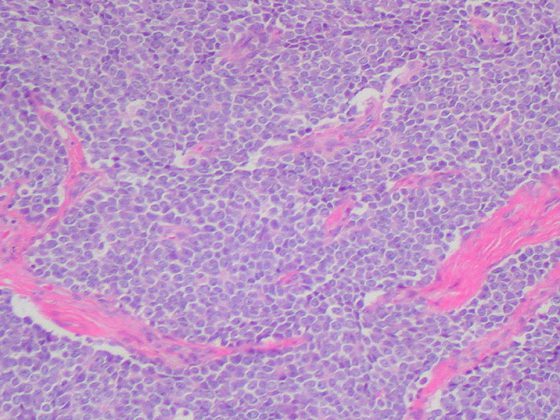Since obesity is, among other things, psychological, psychological interventions play an important role in the treatment of obesity. Goals are to improve impulse control, emotion regulation, and treat chronic stressors as trigger factors.
Obesity is a complex, multifactorial disease. Environmental, genetic, but also psychological and social factors play an important role. In addition to nutrition and exercise, patients’ body perception and emotional well-being must be taken into account. Therapeutic approaches that cover only a subset usually fail to address the complexity of obesity [1]. That is why today we speak of “lifestyle modification” as the therapeutic concept of choice.
It is not uncommon for patients to suffer from psychological comorbidities that either contributed to the development of obesity or developed during the course of the patient’s weight gain and may contribute to the obesity. Eating disorders are also common. The concept of lifestyle modification in this regard is not limited to nonsurgical patients, but can and must be required even in bariatric patients in the postoperative course to prevent weight gain beyond physiologic levels. Data on the long-term course of weight regain after bariatric therapy are available on an international and European level, but are surprisingly little discussed: Physiological is a weight regain of 10-20% of the lowest weight point (nadir weight) after surgery [2]. This means that a regain of 8.5-17 kg is normal when a 160 cm tall patient with a starting weight of 120 kg reaches a weight of 85 kg after surgery. However, we see significantly higher weight gain in one in five patients (Adimed, n=3256; mean observation period: 10 years). Renward Hauser, MD, a specialist in clinical nutrition and bariatric surgery, provides follow-up care for 632 people who had surgery between 1995 and 2018. Of these, 269 patients (44.5%) have so far suffered a rebound of +10 to max. +20% of nadir weight; 116 of these 269 patients (19.2% of all those operated on) went on to procedural failure, i.e., suffered a regain of more than 20%.
An important component of lifestyle change is behavior modification. In the process, behavioral observation and conversion are trained and subsequently repeated and expanded. In most cases, other building blocks of behavioral therapy come into play. In addition to changing the trigger situations, emotional, mental and physical factors influencing eating behavior are identified and alternative strategies are derived. Subsequently, these are practiced with the patients in everyday life. Standard interventions also include relapse prevention and setting long-term behavioral goals.
Dysfunctional emotion regulation as a basis
On a day-to-day basis in the office, patients often report that they tend to “frustrate eat.” Already in such a statement the actual complexity of obesity is revealed. Often, foundations are already laid in childhood: Were you often comforted with food (especially sweets) when you were sad as a child? Did parents compensate for lack of attention by providing food? In such cases, love and affection were often expressed and acted out through food. Deficiency is counterbalanced with the feeling of reward that occurs when food is consumed [3]. These patterns of experience are formative for the rest of the life course.
Eating leads to stimulation of the reward center in the mesolimbic system with corresponding release of endorphins and dopamine – especially with foods containing fat and sugar. In this way, patterns of memory are quickly pioneered and additionally linked to the above-mentioned experiences of love, affection, and comfort. Now, the more frequently these memory pathways are used, the more important they become. At the same time, feeding the same “relaxant” over and over again leads to a dulling of the receptors in the reward center – so more and more of it is needed. As the prefrontal cortex is also more inhibited in the stress response, the organism loses conscious control; the brain goes into “automatic mode” to take the relaxant. In relation to food as a means of emotion regulation, this means that more and more food must be taken in order to achieve the relaxation effect and that this reflex cannot be controlled at the same time. Studies of addictive eating show that addictive eating behaviors exist in about 11% of normal weight individuals, while this is the case in about 25% of overweight individuals [4].
Recent data also suggest that primarily emotionally triggered eating impulses may also be a consequence of dieting experiences, in that the body reacts with stress and impulsivity in eating behavior in a state of caloric deficit. Likewise, a change in the pituitary-adrenal axis, or cortisol release response time, appears to predict emotional eating behavior [5,6]. Corresponding results come from research on chronic stress, where a link between biography, environmental/life situation, the physiological stress response, and subsequent behaviors due to the stress response are explored (“allostatic load” model) [7]. Applied to psychotherapy, this means improving patients’ impulse control and emotion regulation skills. At the same time, however, patients must learn to withstand the tension that arises when the reward stimulus is absent and to be able to change triggering circumstances for the eating impulses, especially chronic stressors.
Eating disorders in obesity
Binge eating disorder (BED), the disorder involving binge eating (ICD-10: F50.9), is common in obesity. For example, studies show that in conservative weight loss programs, up to 30% of participants meet criteria for BED [8]. In most cases, these are downright eating attacks, with sufferers consuming significantly more calories than usual in a short period of time (about 30 minutes). Accompanying this eating behavior is a sense of loss of control. In addition, binge eating has also recently been linked to altered cortisol release. However, it is not uncommon for loss of control to take the form of snacking or grazing. What is meant is that those affected only reach for small snacks, but repeatedly over a longer period of time. Especially in post-bariatric patients, this is a frequently observed phenomenon [9]. Likewise, in post-bariatric patients, especially if figure and weight concerns were already above average before surgery, attention must be paid to the development of anorexic behavior and thought patterns.
Psychiatric-psychological comorbidities
Obesity is associated with higher rates of depression and anxiety symptoms. For example, data show that obese individuals, regardless of gender, have higher rates of major depression, bipolar disorder, panic disorder, and agoraphobia [10]. Data from the US further show that depressiveness predicts obesity. On the other hand, there is evidence that increased depressiveness in obese individuals contributes to poorer overall health. Meanwhile, an atypical subtype of depressive disorder is also discussed, in which appetite and hunger seem to be increased rather than decreased. This may also translate into increased emotional eating, making patients with this subtype of depressive disorder more likely to develop weight gain. Thus, obese patients seeking weight treatment should at least be screened for anxiety and depression symptoms, as these may contribute to weight progression and thus need to be co-treated.
Obesity intervention in psychiatric patients (e.g., chronic major depression, schizoaffective disorder, schizophrenia) may well achieve long-term success related to weight. Chronically psychiatrically ill patients should be treated in a multiprofessional setting. In particular, the duration of weight-related interventions appears to be an important factor. Previous data show that interventions lasting less than six months had little or no effect on weight, while interventions lasting more than 12 months did produce long-term weight loss [11].
This also corresponds to our experience; the success of psychotherapeutic interventions sets in after six months, in combination with nutritional therapy, exercise therapy, behavioral therapy and also pharmacological support. Here, we can achieve an average weight loss of 16.2% from the initial weight if the patient has managed these six months, as shown in a database analysis (n=8252) of the Center for Obesity and Metabolic Medicine (ZAS) Winterthur GmbH [12].
Psychotherapeutic treatment approaches
In the area of general lifestyle changes in obesity, a variety of behavior therapy-oriented methods are suitable (box). Behavioral therapy concepts also show good success in BED. The primary goal in treating BED is to reduce binge eating. It is only in a second step that the actual weight reduction is addressed [13]. The methods used include self-observation protocols, impulse control strategies and cognitive restructuring of dysfunctional thoughts about nutrition, the figure and weight. With regard to dysfunctional emotion regulation, it does not seem to make a difference whether patients undergo specific training on emotion regulation, or are cared for as part of a common lifestyle change program with behavioral psychology elements [14].

However, the ability to perceive the body seems to play an important role in this. Also in line with the above, it should be noted that when treating overweight children, it is essential to involve the parents in the treatment. This is because eating behavior is passed on from parents to children.
However, since obesity is a complex psycho-socio-somatic disease, the above procedures are not sufficient in some patients. By accessing eating behavior, patients slowly become aware of underlying motivational structures that control corresponding behaviors. That’s why often when people start weight treatment, it tends to make their weight situation worse. In psychotherapeutic terms, this is referred to as problem actualization [14]. At this point, clarification-oriented work must be done with patients mostly in individual settings. In the process, patients are helped to further identify their motivational structures and address intrapsychic conflicts (conflict schemas that promote inadequate satisfaction of psychological needs). Patients must thus learn to access new ways of satisfying psychological needs and accept biographical experiences.
In conclusion, psychological interventions are an important component of obesity treatment. This applies not only to therapy, but already to diagnostics. With increasing complexity of obesity as well as the patient’s problem, psychotherapy should be consulted. In some cases, it is even an indispensable component of successful obesity treatment.
Take-Home Messages
- In addition to improving impulse control and emotion regulation skills, psychotherapeutic goals include addressing chronic stressors as trigger factors. Food intake for short-term tension reduction is a common behavior pattern in obesity.
- Eating disorders are common in obese patients and should also be addressed in psychotherapy, especially in bariatric patients. Comorbid anxiety disorders and depressive disorders, also common in obesity, should be screened for.
- A clarification-oriented procedure in an individual setting has proven effective for working on motive structures, conflicting goals, and problem actualization.
Literature:
- Shaw K, O’Rourke P, Del Mar C, et al: Psychological interventions for overweight or obesity. Cochrane Database Syst Rev 2005; 18: CD003818.
- Adams TD, et al: Weight and metabolic outcomes 12 years after gastric bypass. N Engl J Med 2017; 377: 1143-1155.
- van Strien T: Causes of emotional eating and matched treatments of obesity. Current Diabetes Reports 2018; 18: 35.
- Pursey KM, Stanwell P, Gearhardt AN, et al: The prevalence of food addiction as assessed by the Yale food addiction scale: a systematic review. Nutrients 2014; 6: 4552-4590.
- Van Strien T, Roelofs K, de Weerth C: Cortisol reactivity and distress-induced emotional eating. Psychoneuroendocrinology 2013; 38: 677-684.
- Tryon MS, DeCant R, Laugero KD: Having your cake and eating it too. A habit of comfort food may link chronic social stress exposure and acute stress-induced cortisol hypo-responsiveness. Physiol Behav 2013; 114-115: 32-37.
- Seeman TE, Singer BH, Rowe JW, et al: Price of adaptation. Allostatic load and its health consequences: MacArthur studies of successful aging. Arch Intern Med 1997; 157: 2259-2268.
- Spitzer RL, Yanovski S, Wadden T, et al: Binge eating disorder: its further validation in a multisite study. Int J Eat Disord 1993; 2: 137-153.
- Colles SL, Dixon JB, O’Brien PE: Grazing and loss of control related to eating: two high-risk factors following bariatric surgery. Obesity 2008; 16: 615-622.
- Simon GE, von Korff M, Saunders K, et al: Association between obesity and psychiatric disorders in the US adult population. Arch Gen Psychiatry 2006; 63: 824-830.
- Naslund JA, Whiteman KL, McHugo GJ, et al: Lifestyle interventions for weight loss among overweight and obese adults with serious mental illness: A systematic review and meta-analysis. Gen Hosp Psychiatry 2017; 47: 83-102.
- ZAS Winterthur Ltd. Center for Obesity and Metabolic Medicine ZAS, www.adimed.ch.
- Munsch S: Binge eating – cognitive behavioral therapy for binge eating. Weinheim: Beltz, 2003.
- Pjanic I, Müller R, Laimer M, et al: Evaluation of a multiprofessional, nonsurgical obesity treatment program: which parameters indicated life style changes and weight loss? Journal of Eating Disorders 2017; 5: 14.
- Grawe K: Psychological therapy, 2nd edition. Göttingen: Hogrefe, 2000.
HAUSARZT PRAXIS 2018; 13(10): 30-33











